Does massage help fibromyalgia: with bonus self help advice
Clinical trials have shown that massage is effective in relieving fibromyalgia. However, the results show that some are better than... Read Article
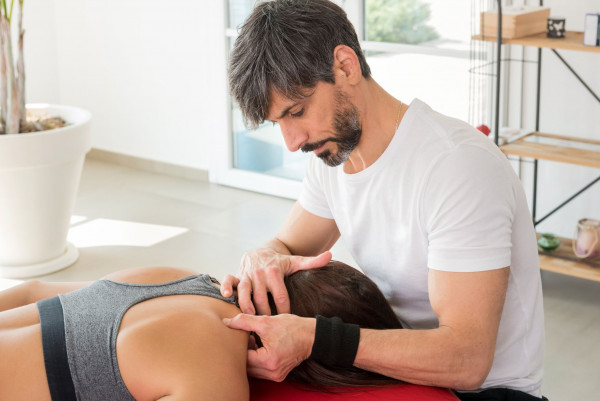
Treating or releasing trigger points yourself is actually extremely easy. With a bit of instruction and practice you can easily find the trigger points in your muscles, and there are three simple effective home therapies you can use: pressure techniques, pressure techniques with massage, and vibration massage.
These techniques arguably work just as well as professionally given therapies such as needles and laser, but can give better long term results because home therapies are usually able to be repeated far more often.
In this article we briefly discuss what trigger points are, then most importantly how to find them on yourself and how to do each of the therapies.
What are trigger points
The basic principles of trigger point release (therapy)
How to find your trigger points
The three safe effective home release (therapy) techniques
Trigger point release (therapy) for various parts of your body
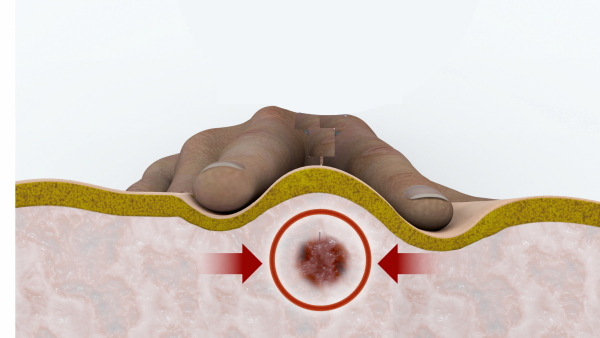
Trigger points are those tender lumps in your muscles that therapists find. Almost every adult has them, and they are arguably the biggest cause of pain such as back, neck and shoulder pain. In this article I’ll give just enough background so you can effectively treat them. For more information please see our article Your complete guide to (myofascial) trigger points.
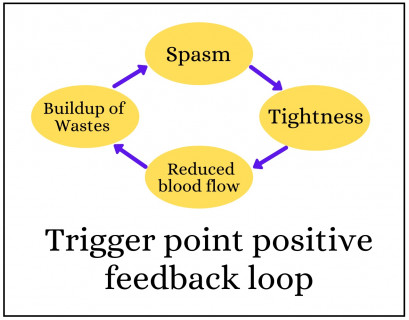
Trigger points are part of the muscle that have gone into spasm or cramp forming a lump. As shown in this diagram, this tightens the muscle restricting blood flow. The reduced blood flow causes a build up of waste products and a shortage of oxygen, making the area toxic. This toxicity causes the muscles to further spasm and tighten. This process causes the spasm to “lock on”. The whole process can go round and round in circles, gradually getting worse over years or even decades.
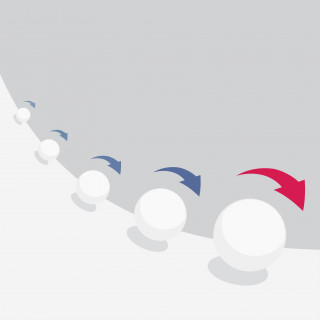
With this process going on trigger points will gradually get bigger over time, like this snowball. When they are small you don’t know they are there unless a therapist presses upon them. However, they can eventually get to the stage where they cause pain without being pressed upon.
As you’ve seen a trigger point is caused by spasm, reduced blood flow and a build up of toxic wastes all feeding on each other and going around in circles. There are a number of different trigger point release or therapy techniques. Each tries to disrupt this by working on one or more parts of this cycle.
If you’ve experienced trigger point release or therapy you’ll understand that the relief can be dramatic but the pain and muscle tension usually comes back. If we look at our snowball diagram again the reason is simple. Pain relieving applications of therapy just shrink the trigger point to where it is not hurting. Of course it’s still there and will gradually grow and start hurting again. This is true whether it is home therapy or professional therapies such as needles or laser.
We’ve got a lot more information about how to eliminate trigger points completely in our article Why do trigger points keep coming back. However, the key is that the therapy needs to be applied repeatedly to continue to diminish the trigger points. This is something you can easily do with home therapies.
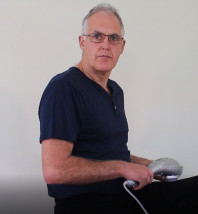
The procedures I’ll share are safe, effective and suitable for most people. However, they may not be appropriate for some. Therefore please consider this as general information only, and seek specific advice from a professional familiar with your own needs. Although the techniques are very easy, it would also be very useful to see a professional at the start just to make sure you are finding the correct spots and doing the therapy effectively, and as discussed in Why do trigger points keep coming back, to see what else needs to be done to help eliminate your problems.
You can use the following technique to find most of your trigger points.
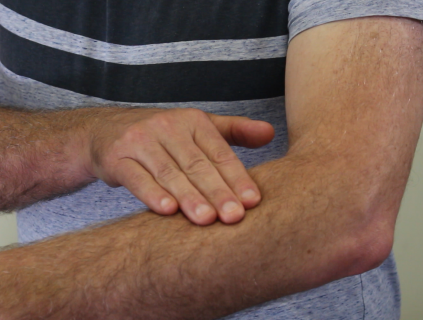
Start by using the pads of several fingers to generally examine your muscles looking for areas of tenderness and tightness.
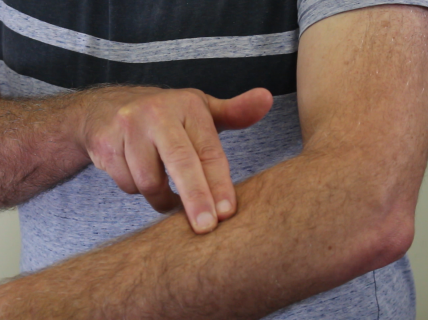
When an area of tightness or tenderness is found use one or two fingers to examine more deeply. Looking for tightness, tenderness and lumps. Generally you will find tight bands of muscle, and if you explore along these bands you will find localized areas of tightness centred around lump. Those lumps are the trigger points. When pressed upon these will be very tender and often cause pain elsewhere.
You’ll usually be able to find and identify a lot of the problems yourself. However, when starting it’s a good idea to get some professional help:
This technique simply involves temporarily applying pressure to the trigger points. These techniques are very commonly used. Most self trigger point releases through to most painful techniques used by professional therapists are variations of this technique.
The amount of pressure used varies. At one end of the spectrum therapists will apply extremely painful pressure and hold until it fades, then apply more pressure repeating the process. This is of course extremely painful. On the other end of the spectrum only a moderate amount of pressure is used.
The good news is that clinical trials have shown that the moderate pressure techniques are very effective, so for this guide I’ll show you two moderate pressure techniques: one you can use for muscles you can easily reach with your own hands, and another technique for where you need to use a mechanical tool to apply pressure.
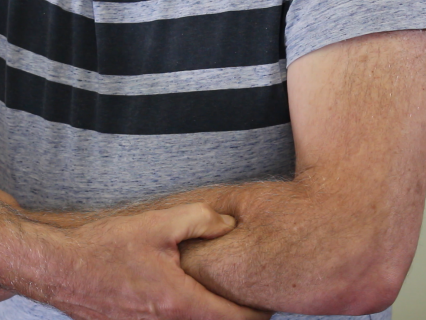
Use this technique for trigger points you can easily reach and apply pressure with using your own hands. For this technique find the trigger point, then apply moderate pressure until you feel the pain fade and the muscle relax, or to a maximum of 90 seconds.
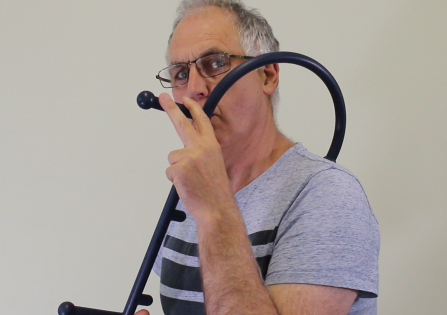
For trigger points you cannot reach with your hands you can use a tool such as the trigger point cane shown to apply pressure. You are able to apply a lot more damaging pressure using a tool, so to keep you safe yet get great results we recommend you use a traditional Thai self massage technique. This has used very successfully in a clinical trial, giving great results. For each trigger point use the tool to apply moderate pressure for 10 seconds then release. Repeat this five times.
For reasons discussed in our article Can foam roller be harmful we recommend you don’ apply this pressure with rollers or balls. In summary, it’s not very effective and potentially dangerous because:
This technique is more effective because it adds massage which helps circulate fresh blood to help flush the wastes. However, you can only use it of parts of your body you can easily reach with your hands.
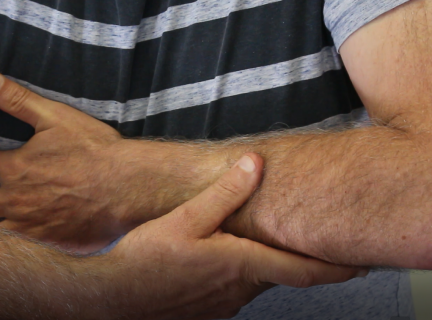
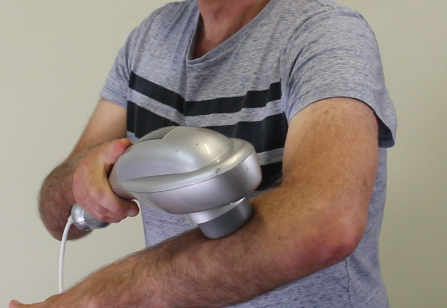
This is by far the easiest, safest and most effective of the home techniques, but you need a proper vibration massager. We’ve got a separate vibration massage usage guide that gives full details, but simply speaking all you need to do is sit the head of the massager over the trigger point and let the vibrations penetrate. Properly designed vibration massagers have ergonomically designed handles to allow you reach and apply this therapy anywhere on your body.
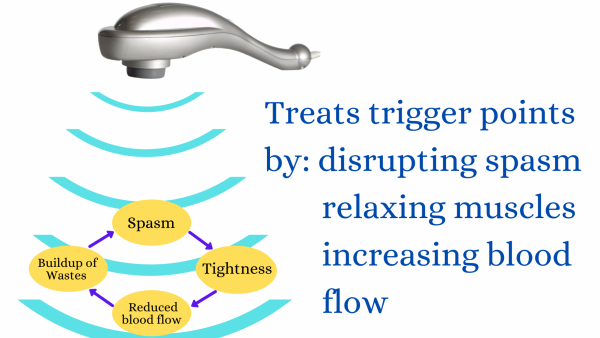
Looking back at how trigger points form we see that it involves spasm, reduced blood flow and a build up of toxic wastes basically going around in circles feeding on each other. Scientists have found that vibrations help each of these issues, so the vibrations from the massager will gradually “dissolve” the trigger points.
Vibration massage is by far the easiest and most effective therapy but you will need a proper vibration massager. As discussed in our guide Why most massagers are a waste of money , most of the vibrating massagers you can buy are not suitable.
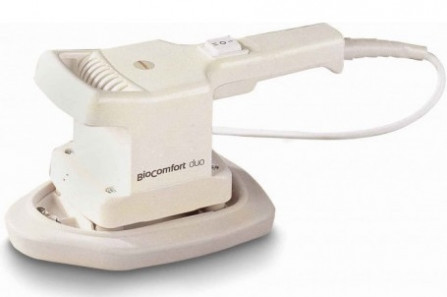
As this example of a professional vibration massager shows, vibration massagers have a head or pad that sits on the surface and sends in therapeutic vibrations. These penetrate like ultrasound (vibrations at a different frequency), and are at the correct frequency for the therapeutic effects. If you use one you will feel the vibrations going "right through you" and having a relaxing effect on your muscles. You will need a personal use version.
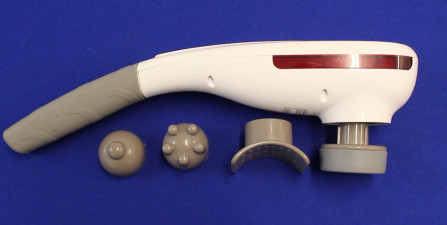
Most vibrating massagers built for consumer use are built to look good on shop shelves rather than be serious therapeutic devices. These usually have low powered motors and inadequate mechanisms, so are not capable of delivering adequate vibration.
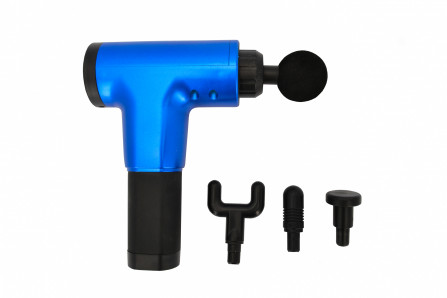
Rather than having a pad that sits on the surface and sending in vibrations massage guns are designed to drive their heads in like jackhammers. Because of this they:
When we were looking for a suitable vibration massager for our patients to use all the effective machines seemed to be "professional" products for therapists to use. These were expensive and not designed for self use. Because of this we built our own that pack the effectiveness of a professional unit into an economical one for self use. They are now used, recommended and sold by over a thousand clinics across half the world (some examples). For information about these and where to get them please use these links.
The General Purpose Massager
The Ultimate Quad Head Massager
Read what professionals say about DrGraeme massagers

Most of our massager sell through colleagues using our machines and recommending the therapy to patients/clients, so we are very happy to send appropriately qualiied professionals a complimentary sample machines to trial. For more info please see our Professional sample sample page .
The scientific effects of vibration with clinical applications
How to choose a massager
You should be able to use the basic examination and therapy techniques shown for most muscles of your body. To help further we’ve done articles showing specific techniques for many areas of your body.
Self massage and trigger point therapy for headaches and migraines
Massage and trigger point therapy for low back pains with self help options
Massage and trigger point therapy for calf pain, with self help options
Massage and trigger point therapy for shoulder pain with self help options
Self massage and trigger point therapy for tennis elbow
Does massage help with fibromyalgia, with self help advice
We are continually adding more information on research and uses. Subscribe below to have us email them to you "hot off the press".

Several years ago Dr Graeme, a Chiropractor practicing in Victoria, Australia was looking for a serious hand held massager his patients could use at home to get the extra quality massage they needed. The ones he found in the shops and on-line for home use looked nice but were not serious, and... read more
Clinical trials have shown that massage is effective in relieving fibromyalgia. However, the results show that some are better than... Read Article
Although often described as “misaligned vertebrae” or “bones out of place” most issues that cause back pain actually involve abnormal... Read Article
A gimmick is something that is not of real value used to attract attention, usually to get you to buy something. Massager guns certainly... Read Article
Do not refresh or leave this page until loading complete.